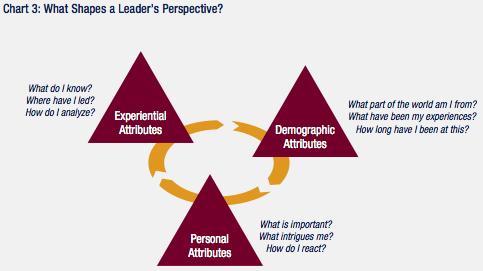
In positions of management and leadership, representation matters. For executive teams to perform at a high calibre, they require people with divergent perspectives and various levels of experience. For businesses, there are many ways to achieve this.
One of the most critical being – to appoint a diverse board of directors and ensure a culture of diversity and inclusion in the boardroom. With the ever-increasing nature of complexities within our global economy, diversity and inclusion (D&I) strategies are needed.
A visible commitment to diversity and inclusion in the boardroom speaks volumes to your employees and customers. Having a rand of perspectives can help organisations and their leaders recognise new strategic goals, and areas of opportunity that will provide value to the people they serve.
What is the role of the board of directors?
The primary responsibilities of a board of directors can vary. However, they commonly include identifying areas of risk and opportunity. This acts as an informed counsel for strategic growth and assessing the performance of the CEO. To accomplish this, boards require a dynamic and collaborative environment.
This means that trust is implicit and diverse opinions are supported.
Traditionally, high-performing boardrooms were believed to be those comprised of connected, like-minded and homogenous groups of people. Their role was to support the CEO and uphold the interests of shareholders. However, this particular structure has been proven to inhibit strategic thinking, organisational growth and innovation.
Can a mostly homogeneous boardroom produce effective strategies and decisions for a company? Research tends to disagree. In fact, Deloitte points out “homogeneous groups don’t come to better solutions” – they’re simply convinced they do.
Homogeneity can be a hindrance to businesses wishing to stay competitive in an incredibly complex and dynamic global economy.
Why is diversity and inclusion important for boards?
As technology continues to develop, so too does the need for effective risk management and corporate governance. It’s essential for boardrooms to be reflective of the shifting workforce and consumer demographics present in today’s world.
That being said, it should be noted that diversity for its own sake can fall short of the opportunities diverse boards provide.
For various backgrounds, perspectives and experiences to work strategically and effectively, boardrooms also need to recognise the value of inclusion. It’s about electing a diverse group of people and ensuring each person is seen and heard.
Having a diverse and inclusive boardroom can aid in the successful execution of corporate governance and strategic oversight.
We’ve done our research and listened to some of the recurring themes surrounding D&I. Two of the most common questions we found were – why is diversity and inclusion important in the boardroom? And how can we build this into their structure? Let’s explore these ideas further.
What is the value of having a diverse and inclusive board?
Diverse perspectives enhance corporate governance and strategic oversight
Regardless of what decisions are being made, having multiple viewpoints and perspectives can aid in producing more effective outcomes. When we examine why this may be, it’s clear to see how diverse thought and opinion helps take into account the various risks and opportunities.
While the effects of emerging technologies present new areas of opportunity for growth, they also involve high levels of risk. With these lines blurring, it is crucial for businesses to encourage diverse ideas, thoughts and opinions to build more effective strategies and decision-making processes.
Decision-making by the board of directors has a significant impact on the company and beyond. The responsibilities of boards can often leave them open to intense scrutiny from investors, external organisations and the media, so it’s crucial to have experience in risk aversion.
Since we can’t always predict areas in which risks can arise, you want your directors to be able to tackle an issue from different angles.
Greater representation of key stakeholders
Having a diverse board means your business is more reflective of the communities they represent. Meaning they are better equipped to anticipate and cater to the needs of all key stakeholders, most notably – shareholders, employees, and consumers.
Boardroom diversity can help your business communicate its dedication and commitment to the broader community, in turn helping to improve brand recognition and reputation. Not to mention, this helps to provide your business with a unique edge in competitive markets.
What does diversity look like in the boardroom?
According to the Harvard Business Review, there are three sets of attributes that influence a person’s perspectives and experiences. These are:
- Socio-Demographic attributes, such as gender, ethnicity, race, religion, disability and socio-economic status
- Experiential attributes, including practical experience, industry experience, academic knowledge and education
- Personal attributes, including but not limited to, personality type, interests, values and goals

When combined, these attributes have a significant impact on the way a person interprets the world around them. In a business context, they influence how people tackle problems, identify opportunities, assess risk and provide solutions.
Understanding how this multidimensional model works can prove to be an invaluable resource for businesses. It provides a starting point for boards and nominating committees to determine how these various attributes can be leveraged to yield value for all stakeholders.
How can we bring diversity and inclusion to the boardroom?
Previously there had been a common tendency for nominating committees to elect members from their own immediate network. Unfortunately for D&I, this creates a self-perpetuating culture of homogeneity. Boardrooms that boast a range of competencies, opinions, insights and backgrounds have proven to be an invaluable resource for businesses.
Here are six easy-to-implement ways your nominating committee can bring greater diversity and inclusion to the boardroom:
1. Build an attribute and skills-based framework
Start by building a framework that considers the core skills, expertise and experience necessary for the optimal functioning of the board. Once this has been completed, start to weave in other elements of diversity based on the attributes model above.
Establish a process for screening these qualities and attributes to ensure equal opportunity for all candidates.
Deloitte recommends the optimal framework be formulated by the nomination committee, and then approved by the board. Once the board composition framework has been identified and confirmed, it should then be periodically reviewed as your business continues to grow.
By taking this step you can also ensure your business upholds their commitment to building a more D&I workplace.
2. Conduct a periodic gap analysis
A gap analysis is a highly useful tool used to identify the skills, attributes and competencies that are underrepresented in the boardroom. Ensure the analysis goes beyond the traditional scope of professional experience or financial expertise to include demographic, experiential and personal attributes.
By doing so, your nominating committee is aware of the areas in need of greater representation, and can implement those into the framework.
A gap analysis should also be regularly conducted to assess the internal culture of the board. This will allow you to implement further D&I initiatives where necessary. Let’s not forget the impact boardroom culture can have on a brand’s image and ability to connect with shareholders, employees and the community.
3. Emphasise the importance of communication
For a board to provide effective strategic oversight and corporate governance, collaborative communication is essential. This means shared perspectives cannot be assumed, or else you risk falling into the fatal trap of ‘groupthink’ and damaging any inclusion measures.
Each director should possess strong communication skills to be able to clearly and succinctly articulate their ideas, thoughts and opinions while respecting and learning from others.
4. Look beyond the executive level
A recent study of various boards of directors from Fortune 250 companies conducted by Russell Reynolds Associates, found a substantial range of untapped female talent below the C-suite. Their research suggests nominating committees should cast a wider net when searching for eligible candidates.
In other terms, it means to look beyond traditional pools of talent.
Directors don’t need to have CEO experience in order to be successful, as many highly qualified general managers, functional leaders and divisional heads possess the necessary skills and experience. Not to mention, this also provides you access to the next generation of executives who can lead the way to a more diverse and inclusive culture.
Unfortunately, many corporations still perceive first-time directors as a risky investment. However, nominating committees should not be discouraged from assessing and evaluating non-traditional candidates. If there are any perceived risks, whether valid or imagined, these can be mitigated through careful assessment and mentorship of the candidate.
5. Ensure an effective board and director evaluation
For a diverse board to be united by shared values and goals, a meaningful director evaluation process is required. Director appraisal and board evaluation should not focus on critiquing mistakes. Instead, they should emphasise ongoing governance improvement.
The focus is on maintaining effective work for the benefit of the organisation and its various stakeholders.
Director appraisals and board evaluation provide an opportunity for useful peer and group feedback. This can be used to determine areas in need of improvement. From an inclusion point of view, this also ensures each member can voice how they are feeling amongst their fellow board directors.
6. Identify and nurture potential talent
To source, attract and retain talent at board level, companies need to identify potential or underrepresented candidates, and provide resources to prepare them for the role. It’s critical to identify areas of opportunity to encourage, support and nurture diverse groups of people into board positions.
Research suggests a number of women directors are first elected through active championing by the CEO or an existing board member. This indicates that higher female board representation can be achieved through mentorship programs and initiatives that provide opportunities for women.
The wrap up
With multiple perspectives, skills and backgrounds, we see a greater ability to react to changes in the environment. Without a well-rounded understanding of the entire market and it’s heterogeneous nature, boards lack the ability to make timely decisions and adapt quickly.
Within Australia and throughout the world, there is ongoing work to be done on driving necessary diversity and inclusion improvements at the boardroom level. However, by implementing these six strategies you can ensure your company does their part to develop a more diverse and inclusive boardroom that is reflective of the very people they represent.
For more diversity and inclusion resources, have a read at:
- What is diversity and inclusion at work?
- Promoting gender and racial equality in the workplace
- How employers can support people with disabilities
- How employers can support transgender employees
- What Aussie employees want in 2022
Diversity and inclusion handbook
